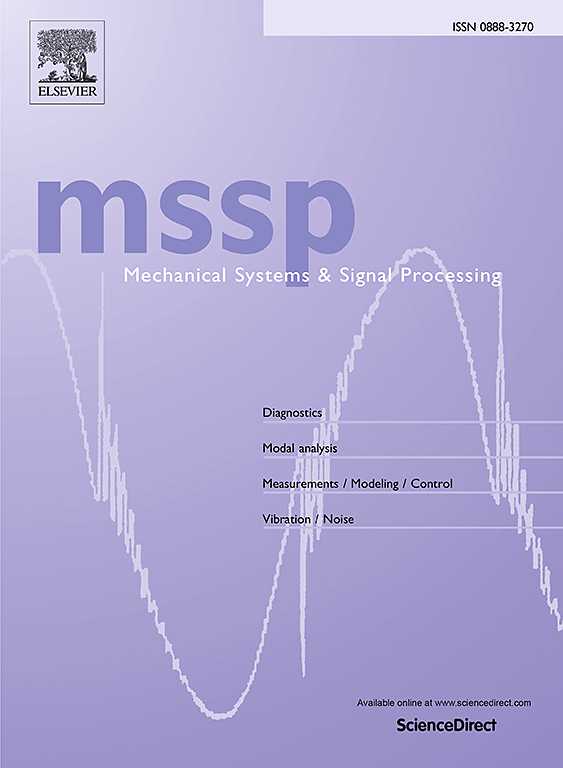Damage imaging in aircraft structures using low-frequency elastic guided waves
IF 7.9
1区 工程技术
Q1 ENGINEERING, MECHANICAL
引用次数: 0
Abstract
The aim of this paper is to develop a framework for the non-destructive evaluation (NDE) of aircraft structures comprising tapered honeycomb sandwich composites by utilizing the propagation of the low-frequency fundamental antisymmetric guided wave mode, specifically focusing on group speed variations due to the continuously changing waveguide thickness. To this end, a tapered honeycomb sandwich composite with GFRP face sheets and an aluminium honeycomb core containing a circular debond damage is modeled numerically, while experimentally, a real-life helicopter blade specimen is inspected for the presence of an artificial damage created by an in-house designed low-speed impact test setup. The numerical and experimental wavefield representations demonstrated significant interruptions in the wavefield patterns due to the presence of damage, whereas smooth patterns are observed in the pristine structures. The out-of-plane A-scan responses in both types of investigations illustrated a substantial magnification of the amplitude of the propagating guided wave mode due to the presence of damage. The damage source is eventually localized using the proposed total focusing method with full matrix capture-based health monitoring framework. Furthermore, the resulting color contour map is subjected to a thresholding technique by incorporating an appropriate threshold value to efficiently determine the damaged area, both numerically and experimentally. The robustness of the proposed damage detection technique is verified by the effective localization of multiple debond zones of variable dimensions in a tapered honeycomb sandwich composite model.

求助全文
约1分钟内获得全文
求助全文
来源期刊

Mechanical Systems and Signal Processing
工程技术-工程:机械
CiteScore
14.80
自引率
13.10%
发文量
1183
审稿时长
5.4 months
期刊介绍:
Journal Name: Mechanical Systems and Signal Processing (MSSP)
Interdisciplinary Focus:
Mechanical, Aerospace, and Civil Engineering
Purpose:Reporting scientific advancements of the highest quality
Arising from new techniques in sensing, instrumentation, signal processing, modelling, and control of dynamic systems
 求助内容:
求助内容: 应助结果提醒方式:
应助结果提醒方式:


